News and press releases
GRS seeks to provide clear and careful communication. Our demands on the comprehensibility and quality of information are based on the Guidelines for good science PR.
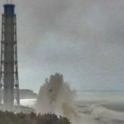
On 11 March 2011, the most severe earthquake since records began in Japan occurred off the east coast of the Japanese main island of Honshū. The quake and especially the resulting tsunami devastated large areas of eastern Japan and caused an enormous number of casualties: Ten years after the tragedy, various official statistics count around 20,000 fatalities, and in December 2020, there were more than 2,500 people still considered missing. It is estimated that around one million buildings were destroyed or damaged.
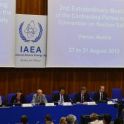
Our five-part series "10 Years of Fukushima" looks at the nuclear accident in Japan from different perspectives. This week we present the lessons learned and consequences that the accident has had for nuclear power plant operation and supervision, both nationally and internationally.
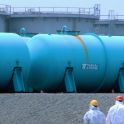
In addition to recovering the highly radioactive core melt from the affected reactor units, the disposal of enormous quantities of contaminated water represents the greatest challenge in the clean-up of the Fukushima Daiichi site. More than one million tonnes of it are stored in large tank areas on the plant site. While the space for new tanks will soon be exhausted at the site, the amount of water is increasing with each passing day.
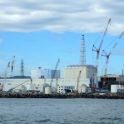
In our five-part series on the occasion of the 10th anniversary of Fukushima, today we look at the dismantling activities. The dismantling of a nuclear power plant (NPP) is a lengthy process.
Safety research for nuclear facilities is one of the main areas of GRS's work.
Physicist Dr Thorsten Stahl heads the Radiation and Environmental Protection Department of GRS, is the company's radiation protection supervisor and was part of the team with which GRS provided technical support to the Federal Government during the accident at Fukushima. In this interview, he explains what makes determining the long-term health effects of the accident so complex and how he assesses a possible discharge of contaminated water from a radiological point of view.
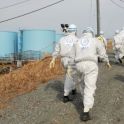
The second part of our series "10 Years of Fukushima" deals with the radiological consequences of the events: How badly were the plant site and the surrounding area contaminated? How many people were affected and to what extent? What are the long-term effects of radioactivity on the region and what is the situation like today?
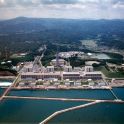
Our GRS colleague Dr Michael Maqua has been performing the function of INES Officer for Germany on behalf of the Federal Ministry for the Environment for more than 13 years. INES stands for "International Nuclear and radiological Event Scale", a scale for the classification of nuclear events and accidents. The trained engineer followed the events around the nuclear accident at Fukushima from the GRS emergency centre. In this interview, he answers our questions about how he remembers this time.
In interventional radiology, diagnostic or therapeutic medical interventions can be performed while monitoring them at the same time by means of imaging. Such interventions increasingly offer an alternative to classical surgery as they usually do not require a general anaesthetic and are associated with fewer risks, less pain and shorter convalescence times. However, as ionising X-rays are often used for imaging, the radiation exposure of medical staff increases with the number of such operations. In an interdisciplinary research project funded by the Federal Ministry for the Environment, GRS scientists are developing a three-dimensional simulation model that will allow conclusions to be drawn on how to optimise radiation protection.
For about 10 years, our GRS colleague Dr. Michael Maqua has been performing the duties of the Ines officer for Germany on behalf of the Federal Environment Ministry. INES stands for "International Nuclear and Radiological Event Scale", a scale for the classification of nuclear incidents and accidents. More than 70 countries are currently using INES. The graduate engineer is engaged in international project management and answers all our questions about his work as an INES officer.